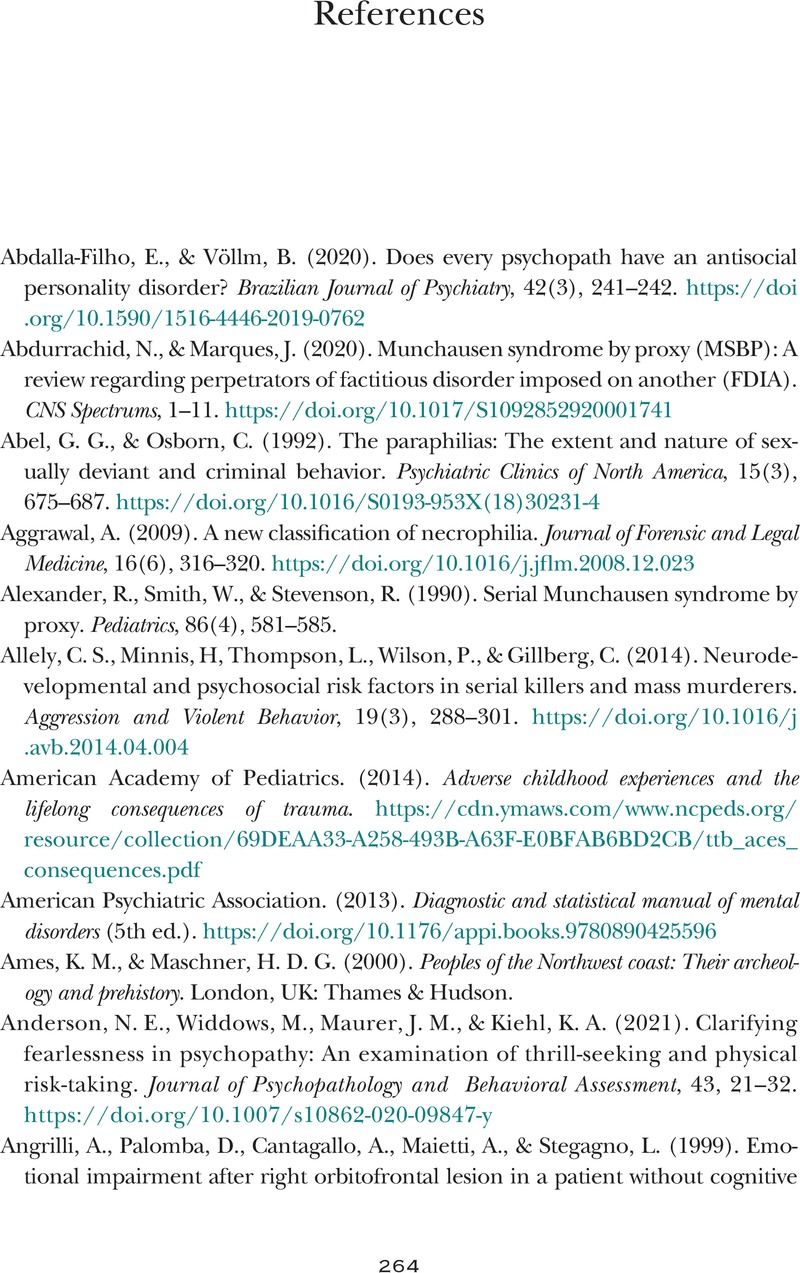Book contents
- Just as Deadly
- Advance Praise
- Just as Deadly
- Copyright page
- Dedication
- Contents
- Preface
- Epigraph
- Chapter 1 Introduction: What Is a Serial Killer?
- Chapter 2 Why Are We Interested in Serial Killers?
- Chapter 3 The Lives of Female Serial Killers
- Chapter 4 Mental Health and Substance Use Among FSKs
- Chapter 5 FSK Crimes and Outcomes
- Chapter 6 FSK Motives and Profile
- Chapter 7 Comparing FSKs and MSKs: Backgrounds and Mental Illness
- Chapter 8 Comparing FSKs and MSKs: Crimes and Victims
- Chapter 9 The Behavioral Neuroscience of Serial Murder
- Chapter 10 Psychosocial Factors that Make a Serial Murderer
- Chapter 11 Evolutionary and Converging Perspectives of Serial Murder
- Chapter 12 Our Understanding of Serial Killers Evolves
- Acknowledgments
- Notes
- References
- Index
- References
References
Published online by Cambridge University Press: 06 January 2023
- Just as Deadly
- Advance Praise
- Just as Deadly
- Copyright page
- Dedication
- Contents
- Preface
- Epigraph
- Chapter 1 Introduction: What Is a Serial Killer?
- Chapter 2 Why Are We Interested in Serial Killers?
- Chapter 3 The Lives of Female Serial Killers
- Chapter 4 Mental Health and Substance Use Among FSKs
- Chapter 5 FSK Crimes and Outcomes
- Chapter 6 FSK Motives and Profile
- Chapter 7 Comparing FSKs and MSKs: Backgrounds and Mental Illness
- Chapter 8 Comparing FSKs and MSKs: Crimes and Victims
- Chapter 9 The Behavioral Neuroscience of Serial Murder
- Chapter 10 Psychosocial Factors that Make a Serial Murderer
- Chapter 11 Evolutionary and Converging Perspectives of Serial Murder
- Chapter 12 Our Understanding of Serial Killers Evolves
- Acknowledgments
- Notes
- References
- Index
- References
Summary

- Type
- Chapter
- Information
- Just as DeadlyThe Psychology of Female Serial Killers, pp. 264 - 287Publisher: Cambridge University PressPrint publication year: 2023



